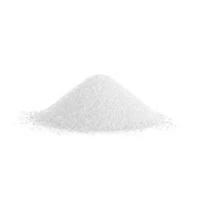
Using Sorbic Acid in Food Preservation for Enhanced Shelf Life and Safety
Sorbic Acid as a Preservative An Overview
Sorbic acid, a natural organic compound, has gained popularity in the food industry due to its effectiveness as a preservative. First identified in the late 19th century, sorbic acid is derived from the berries of the rowan tree and has since been synthesized for commercial use. This multifunctional ingredient has proven to be a vital ally in extending the shelf life of various products, thereby safeguarding food quality and enhancing consumer safety.
Sorbic Acid as a Preservative An Overview
Sorbic acid is commonly used in a variety of products, including baked goods, cheeses, pickles, fruit juices, and even certain cosmetics. In the realm of baked goods, for instance, the use of sorbic acid helps to prevent mold growth, which can occur rapidly under proper moisture and temperature conditions. In the dairy sector, it aids in preserving the shelf life of soft cheeses that are particularly susceptible to spoilage.
sorbic acid as preservative

One of the advantages of sorbic acid is its low toxicity and safety for human consumption when used appropriately. The U.S. Food and Drug Administration (FDA) has classified sorbic acid as Generally Recognized As Safe (GRAS), which means it is considered safe when used in specified amounts. Research indicates that when consumed within regulatory standards, sorbic acid does not pose significant health risks to consumers. However, as with any additive, there are acceptable limits to ensure safety.
Despite its benefits, the use of sorbic acid is not without controversy. Some consumers are increasingly interested in natural and clean-label products, leading to a preference for preservatives that are perceived as more natural than synthetic additives. This trend prompts food manufacturers to explore alternative preservation methods such as fermentation, refrigeration, and the use of essential oils. However, sorbic acid remains a popular choice due to its efficacy and cost-effectiveness.
Furthermore, sorbic acid’s effectiveness is influenced by factors such as pH, temperature, and the specific types of microorganisms present. This necessitates careful formulation and testing to achieve optimal results. As food science continues to evolve, research into enhancing the effectiveness of sorbic acid and discovering novel methods of using it will likely continue.
In conclusion, sorbic acid plays a crucial role as a preservative in the food industry. Its ability to prolong shelf life, combined with its relatively safe profile, makes it a staple in preserving the quality of various food products. While challenges remain, particularly in the face of consumer trends toward natural ingredients, sorbic acid is likely to continue to be an essential tool for food preservation, helping to balance the demands of safety, shelf life, and taste. As awareness and research grow, the food industry will adapt, ensuring that preservation methods align with consumer preferences and safety standards.
-
nitrile-rubber-honoring-strict-production-standardsNewsAug.22,2025
-
aspartame-ingredients-honoring-food-safety-valuesNewsAug.22,2025
-
fertilizer-for-balanced-plant-nutritionNewsAug.22,2025
-
cyanide-gold-processing-with-high-purity-additivesNewsAug.22,2025
-
formic-acid-in-textile-dyeing-applicationsNewsAug.22,2025
-
aluminum-hydroxide-gel-in-skincare-productsNewsAug.22,2025
-
Regulatory Compliance for Global Mining Chemicals UseNewsAug.12,2025
Hebei Tenger Chemical Technology Co., Ltd. focuses on the chemical industry and is committed to the export service of chemical raw materials.
-

view more DiethanolisopropanolamineIn the ever-growing field of chemical solutions, diethanolisopropanolamine (DEIPA) stands out as a versatile and important compound. Due to its unique chemical structure and properties, DEIPA is of interest to various industries including construction, personal care, and agriculture. -

view more TriisopropanolamineTriisopropanolamine (TIPA) alkanol amine substance, is a kind of alcohol amine compound with amino and alcohol hydroxyl, and because of its molecules contains both amino and hydroxyl. -

view more Tetramethyl Thiuram DisulfideTetramethyl thiuram disulfide, also known as TMTD, is a white to light-yellow powder with a distinct sulfur-like odor. It is soluble in organic solvents such as benzene, acetone, and ethyl acetate, making it highly versatile for use in different formulations. TMTD is known for its excellent vulcanization acceleration properties, which makes it a key ingredient in the production of rubber products. Additionally, it acts as an effective fungicide and bactericide, making it valuable in agricultural applications. Its high purity and stability ensure consistent performance, making it a preferred choice for manufacturers across various industries.





